Safety programs that include drug testing, background checks, and occupational medicine are not new, and, for many businesses, are an essential part of the budget every year. However, as we look to 2021 budgets, there are some critical changes to be aware of and some standards that should not be abandoned at any cost.
As you budget 2021, consider prioritizing on-site drug testing, COVID-19 testing, vaccines for COVID-19 and the flu, machine assisted physical assessments, ongoing and targeted background checks.
The Current Economy: Physical Work is still a wide-spread requirement
One third of workers in the United States were required to exert significant force as part of their jobs in 2019, and that number has likely increased as our businesses are shifting away from customer service and more towards warehouse, shipping, and delivery in the COVID-19 economy. However, not every worker is able to properly lift weight or perform repetitive movements without injury repeatedly.
The 10 industries with the most work-related injuries
- Non-construction laborers
- Semi-truck drivers (truck accident injuries)
- Maintenance employees/janitors
- Nurses assistants
- General repair workers
- Retail employees/salespeople
- Registered nurses
- Stocking clerks
- Construction workers
- Delivery drivers
If an employee is injured at work, you, the employer, have a responsibility to pay for their recovery through a workman’s compensation claim. Each state has specific requirements. In Texas, the requirements are as follows:
Temporary income benefits (TIB): Equal to 70% of the difference between the employee’s average weekly wage and the wages earned after the work-related injury, subject to the state maximum. TIB begins eight days after the injury and continues until maximum medical improvement.
Impairment income benefits (IIB): If the employee reaches maximum medical improvement, but is unable to return to work, the employee is eligible for IIB. Benefits are equal to 70% of the average weekly wage, subject to the state maximum, payable for a number of weeks that correlates to the severity of the injury.
Supplemental income benefits (SIB): Severely disabled workers are eligible for SIB, once IIB payments run out. Benefits are equal to 80% of the difference between 80% of the average weekly wage and weekly wages after your work-related injury, subject to the state maximum. TIB, IIB and SIB combined are capped at 401 weeks.
Lifetime Income Benefits (LIB): Equal to up to 75% of average weekly wages, initially subject to the state maximum, with a 3% increase each year.
Other notable coverage: Surviving dependents are eligible for death benefits up to 75% of the deceased's average weekly wage, subject to state maximum, and possible burial expenses.
Machine Assisted Physical Assessments: The best protection for your business and employees
This is where physical assessment comes in. Companies that perform pre-employment assessments that match the requirements of the job see lower workman’s compensation claims and higher productivity because “when lifting capacity results were compared with job requirements, those workers who met the physical job demands were found to have significantly lower injury rates than those workers who did not demonstrate the required physical capacities.”
The best way to test physical capability is with a machine-based assessment system, like the BTE EvalTech. WSS has acquired the BTE EvalTech. It is a new piece of technology that gives employers a new and comprehensive way to help customers evaluate and manage their workplace assessment program. This new technology advances physical assessment programs by, “providing the most peer-reviewed and legally defensible evaluations with automated reports untouched by manual data entry,” noted by EvalTech.
How does machine-based physical assessment work?
You will have a consultation with WSS, and we will turn it into a fit for duty physical that is specific to each job. We then have a standard physical that we will set up for them that meets the job requirement. The BTE EvalTech uses isometric evaluation, which means that it assess each individual's isometric strength, then provides a baseline for that employee, which can be measured against the pre-set requirements. There is little to no chance of injury during the test, and the accuracy is far higher than a typical physical assessment. This has dramatically reduced the number of worker's compensation cases for companies that choose to employ the BTE EvalTech.
In the current atmosphere, the BTE EvalTech has the added benefit of reducing contact between the employer and the applicant. WSS will set the machine, then the applicant or employee can perform the pre-set test individually. Also, the machine contains a limited number of panels and handles and is able to be easily wiped down and cleaned between testers.
When you’re ready to begin accurately assessing your employees before they begin and reduce workman’s compensation claims, contact us for your BTE EvalTech assessment.

.png?width=500&height=500&name=Blue%20and%20White%20Classic%20Shield%20Financial%20with%20Star%20Logo%20Design%20(1).png)


